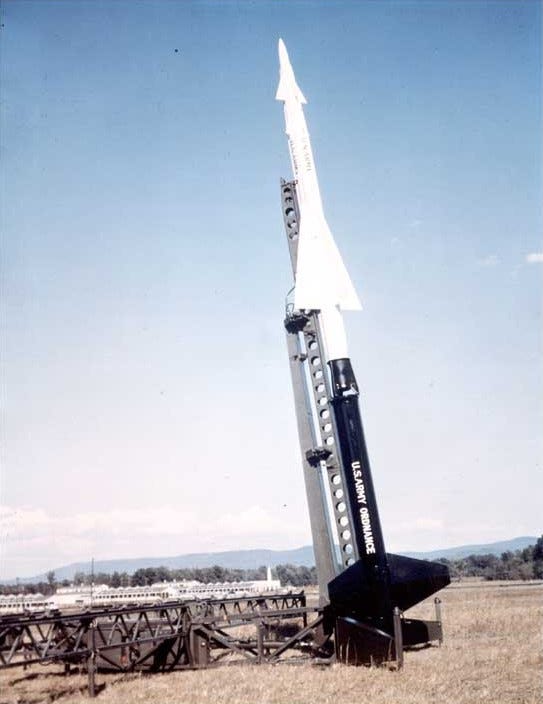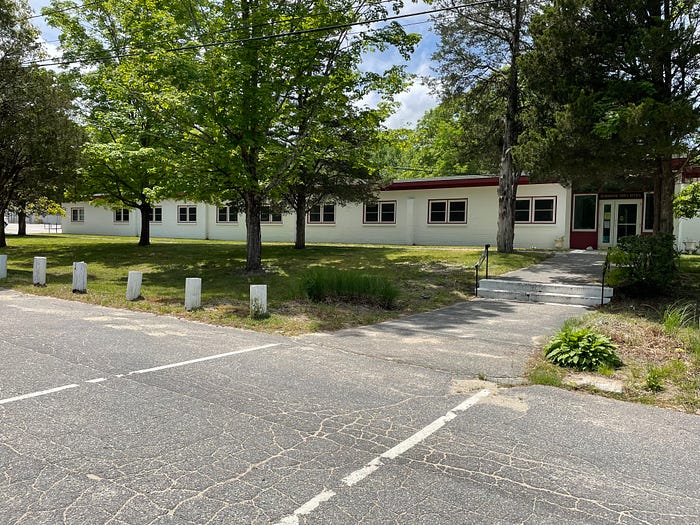Defending the Homeland: Nike Missile Sites in Southeastern Massachusetts
By William F. Hanna
The Cold War has been over for more than 30 years, so a generation of young people has come of age without ever having lived under the immediate threat of nuclear annihilation. Older Americans, however, have no trouble recalling those days of tension and political brinksmanship when the world was a more dangerous place. Children who grew up in the 1950s and ’60s will always remember the so-called “duck and cover” drills conducted in their classrooms to teach them how to survive a nuclear attack. Some Americans built fallout shelters in their backyards, while almost everybody tried to decipher a host of Cold War acronyms. SAMs were surface-to-air missiles, SAC was the Strategic Air Command, and ICBMs were intercontinental ballistic missiles. Each Christmas the people at NORAD tracked Santa Claus’s progress around the world, and for a few hours at least it was forgotten that NORAD was actually the North American Aerospace Defense Command — always on highest alert for early signs of an imminent Soviet nuclear strike.
The fact that the continental United States hadn’t been attacked since the early 19th century was irrelevant by the mid-20th, first because of long range jet bombers and later by Soviet ICBMs. Most Americans accepted the idea that civil defense demanded a reliable warning system as well as the capacity to defend the homeland. And that realization was what brought the tools of armageddon to southern New England.
Beginning in the mid-1950s, the U.S. Army deployed more than 250 Nike missile sites across the United States. Built in concentric circular patterns around important urban, industrial or military assets, these housed radar guided, supersonic anti-aircraft missiles. The early Nikes, designated Ajax, were deployed to defend against Soviet long range, high altitude bombers that might try to reach the U.S. via a route over the North Pole.

In the late 1950s and early ’60s, a second Nike, called Hercules, was introduced to counter the apocalyptic threat presented by Soviet intercontinental ballistic missiles. There was a critical difference in the two U.S. missile types. Whereas Ajax warheads carried only conventional surface-to-air, anti-aircraft shrapnel, Nike Hercules were armed with nuclear warheads.
There were 16 Nike sites based in Massachusetts and of those, 14 were positioned to defend Boston. The other two Bay State installations, one in Rehoboth and the other in Swansea, were part of a network deployed to protect the Providence, Rhode Island metropolitan area. To accomplish that, the operations of the two southeastern Massachusetts sites were integrated with five other Nike installations in the Ocean State. These were located in Bristol, North Kingston, Coventry, Foster and North Smithfield.

The Nike bases in both Rehoboth and Swansea became operational in April 1956. They were armed exclusively with Ajax missiles, so they never handled nuclear weapons. Indeed, of the seven installations surrounding Providence, only two — Bristol and North Smithfield — were upgraded during 1959 and 1960 to launch Nike Hercules warheads.
The Rehoboth and Swansea sites were nevertheless well armed and adequately protected. In addition to 12 above ground launch pads, all with Nike Ajax missiles pointing skyward, each installation maintained three side-by-side underground magazines capable of storing a total of an additional 30 missiles. These ordnance bunkers were built to withstand the destructive trauma of aerial bombardment. A newspaper reported that the Swansea site’s magazines — which were actually located just over the town line in Dighton — were constructed using 24-inch thick concrete walls and featured heavy steel doors. This configuration proved more than adequate to store the missiles, each of which was 33 feet long and weighed 2,500 lbs.

The Nikes already on the launch pads were considered “hot,” ready to be fired immediately, while those underground were “cold,” or not able to be deployed until fueled and mounted for launch. The entire setup was optimized for an immediate response to any perceived threat. These missiles were designed to counter subsonic enemy aircraft flying above 50,000 feet. They had an operational range of 30 miles.
All of the Nike sites, including both southeastern Massachusetts bases, were fully manned by U.S. army personnel. In a 2012 interview with a Fall River Herald News reporter, former corporal Arden Thomas, who as a young Missouri soldier was stationed at the Swansea base from 1958–1961, remembered that there were about 28 men posted at the site’s integrated fire control area, while another 22 were on duty at the installation’s Dighton magazines. Corporal Thomas, incidentally, met his future wife in Swansea and settled in the town after his discharge from the service. In addition to its use as an Ajax launch site, the Rehoboth base also housed the Army Air Defense’s headquarters section. Corporal Thomas remembered that his Swansea base operated under the local control of the Rehoboth headquarters.
The headlong rush of Cold War weapons technology pushed the Nike program ever-closer to obsolescence by the mid-1960s. Both of the southeastern Massachusetts sites were closed in August 1963, though the Rehoboth base was reopened in December 1964 to serve strictly as a Nike Hercules battalion headquarters. That installation closed for good in 1974, and a year later the entire Nike program was deactivated as part of the Strategic Arms Limitation Treaty (SALT II, another acronym) signed by the U.S. and the Soviet Union.

Aside from commemorative signage in Rehoboth and Swansea, there is very little to remind visitors of the area’s Cold War history. And yet, several of the most important and interesting locations, now pressed into peacetime service, are within easy reach. Among them, on Peck Street in Rehoboth, is the former Nike site’s administration building, still standing in good condition and until recently serving as the Town Hall. Nearby, the old missile assembly building is now the town’s animal shelter, while just a stone’s throw away the location of the Rehoboth site’s subterranean magazines is covered by athletic fields.

In Swansea, a ride along Sharps Lot Road reveals other relics of the Cold War. The old pre-fab houses used by military personnel still stand, while streets named Nike Site Road and Missile Loop invite the visitor to have a look. More than 50 years after the soldiers departed, these small houses stand now in attractive, comfortable, well-kept neighborhoods. Off of Sharps Lot Road, the location of the Swansea site’s Dighton magazines is now covered by the Iron Mountain Data Storage building. Inaccessible to the public, the only thing visible behind a chain link fence is the old, forlorn guard shack.

